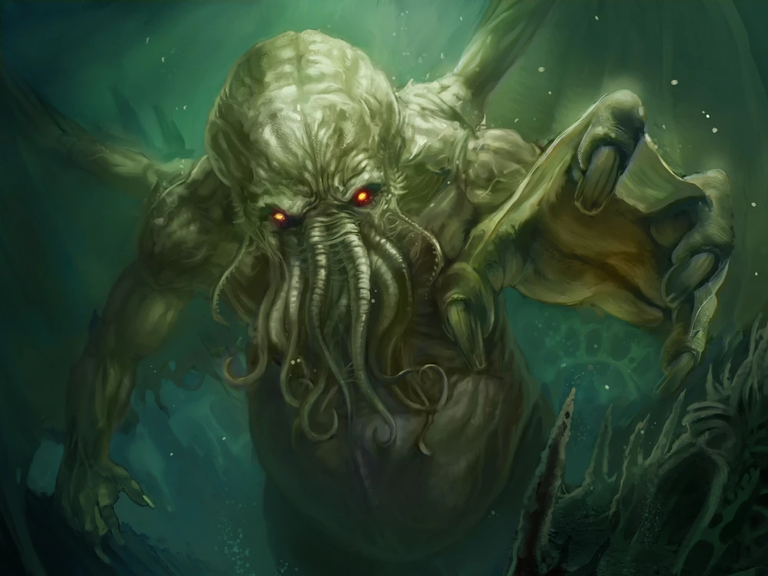
To a greater or lesser extent, literary creation always obeys the obsessions of its author. Now, as far as Howard Phillips Lovecraft is concerned, we can be categorical in stating that he built his entire work, one of the most unique and influential in fantasy literature, on the basis of his phobias and complexes. Thus, his aversion to fish led him to imagine a series of abominations from the sea; his racism, to the monstrosities arising from the mating of humans with them; and the nightmares, which invariably populated his dreams, led him to create a dream universe that surpasses the visions produced by the ingestion of hallucinogens.
Either alone or in collaboration with one of his many disciples, who already worshipped him during his lifetime, Lovecraft wrote around 70 stories, dozens of articles and hundreds of poems. At the same time, his inveterate habit of answering all the letters sent to him by his readers means that his letters number around 100,000. 60 years after his death, Cthulhu, the most famous of the sinister divinities he imagined, occupies the same place in the gallery of horror literature - let us say it with the words of Rafael Torres Oliver, one of the master's best translators - as Frankenstein, Dracula or Tolkien's Bilbo Baggins.
Born in Providence (Rhode Island) on August 20, 1890, his father was a traveling salesman - according to some authors, an alcoholic - who died, having barely met his son, when the future writer was eight years old. Thus, the upbringing of young Lovecraft was left in the care of his mother, a possessive and authoritarian woman who instilled in him her misanthropy based on the belief that his British ancestry made them superior to the rest of the North Americans. It is curious that so much vanity did not prevent her from constantly reminding young Howard of his ugliness. Indeed, one of the keys to what concerns him must be sought in his ungrateful appearance; another, in the splendid library of his maternal grandfather. Despised by the rest of the children, solitary, fantastical and repressed, Howard Phillips will find refuge in early readings. He is only six years old and already knows the legends of classical paganism. Thus, he will soon call classical antiquity "the Golden Age of the world."
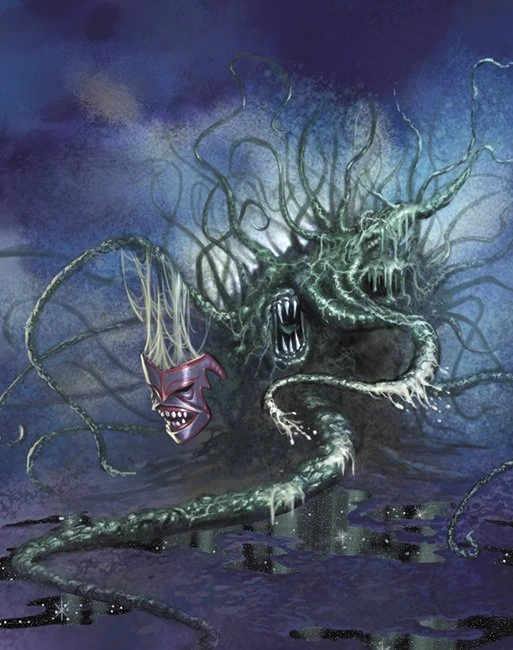
As his experience as a reader progressed, the authors who would influence him most would be Edgar Allan Poe - whom he defined as "deity and source of all diabolical fiction" -, Lord Dunsany, Arthur Machen and the rest of those whom, over time, he would bring together in his essay 'Horror in Literature', the most lucid reflection on the genre. After his mother died in 1921 and the family fortune that had allowed him to live until then was exhausted, for the first time in his life HP Lovecraft found himself in need of work. As the only thing he knew how to do was write, he would become a critic, a copy editor and, what really counts for us: an author of horror stories. Among his first readers were some of the writers who would soon become his disciples: August Derleth, Frank Belknap Long, Clark Ashton Smith, Donald Wandrei and Robert Bloch. To them - with whom he would overcome his old misanthropy - he addressed some of his first letters, which he often signed with the pseudonym Abdul Alhazred, evoking the most famous of his characters.
Abdul is an Arab who lost his mind while writing the 'Necronomicon', a fabulous text which compiles the rites of Cthulhu and the spells to invoke the Archetypal Gods and other divinities who hope to rule our planet again, as they did before the arrival of man. The saga of Cthulhu - "a monster with a vaguely anthropomorphic profile, but with a head similar to that of an octopus whose face was a mass of tentacles; a body with rubbery-looking scales; tremendous claws on the front and back extremities, and long, narrow wings behind" - constitutes the best of his production.
Married to Sonia Greene in 1924, he moved with her to Brooklyn, only to separate two years later. Back in his native Providence, Lovecraft returned to being the same misanthrope as always, with no other interest than his reading and writing. He died of intestinal cancer on March 15, 1937. Since then, his prestige among readers of the most varied nationalities has continued to grow.
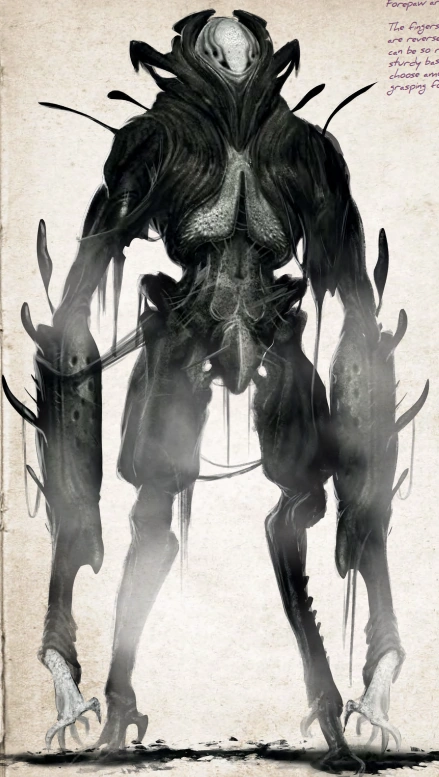
Lovecraft's work has been grouped into three categories by some critics. While Lovecraft preferred not to refer to these categories himself, he did write on occasion: "There are my Edgar Allan Poe pieces and my Dunsany pieces - but - where are my Lovecraft pieces? [4]
* Macabre Tales (c. 1905–1920)
* Dream-Cycle Stories (c. 1920–1927)
* The Cthulhu Mythos/Lovecraft (c. 1925–1935)
Some critics do not see the difference between the Dream-Cycle and the Cthulhu Mythos, often pointing to the recurring Necronomicon and subsequent gods. An oft-argued explanation is that the Dream-Cycle belongs more to a fantasy genre while the Mythos belongs to science fiction.
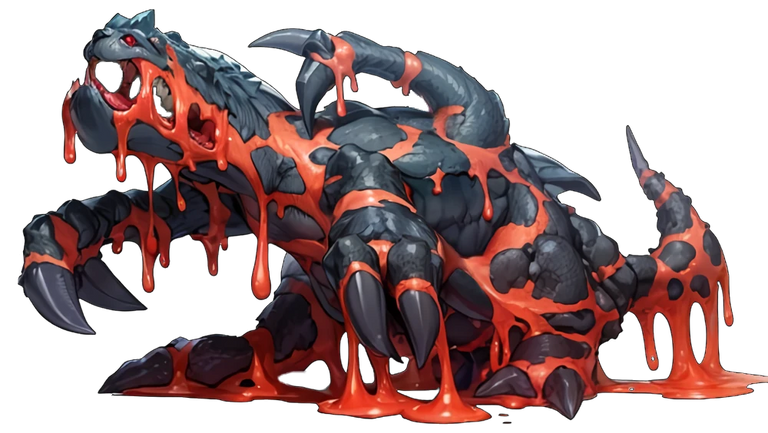
Lovecraft's nightmares served as a direct inspiration for his work, and it is perhaps a direct insight into his unconscious and its symbolism that accounts for its continued buzz and popularity. All of these interests led him to believe that Lovecraft's work was a direct inspiration for the work, and that it was a direct insight into his unconscious and its symbolism that explains its continued popularity. Lovecraft came to appreciate in a special way the work of Edgar Allan Poe, who strongly influenced his early stories, with their macabre atmosphere and hidden fears lurking in the darkness. Lovecraft's discovery of the stories of Edward Plunkett, Lord Dunsany, took his literature to a new level, resulting in a series of fantasies that took place in the land of dreams. It was probably the influence of Arthur Machen, with his well-constructed tales about the survival of ancient evil and his mystical beliefs in hidden mysteries that lay behind reality that finally helped inspire Lovecraft to find himself from 1923 onwards.
Another inspiration came from an unexpected source: scientific advances in areas such as biology, astronomy, geology and physics, which reduced the human being to something insignificant, powerless and condemned in a mechanical and materialistic universe, a tiny speck in the infinite vastness of the cosmos. These ideas contributed decisively to a movement called cosmicism, and gave Lovecraft compelling reasons for his atheism.
This led him to a dark throne with the creation of what is today commonly called the Cthulhu Mythos, a pantheon of extradimensional alien deities and horrors that feed on humanity and have traces of ancient myths and legends. The term Cthulhu Mythos was adopted by author August Derleth after Lovecraft's death. The author referred to his artificial mythology as Yog-Sothothery.
His stories created one of the most influential elements in the horror genre: the Necronomicon, the secret writings of the Arab Abdul Alhazred. The impact and strength of the concept of myth has led some to conclude that Lovecraft based his work on pre-existing myths and occult beliefs. Apocryphal editions of the Necronomicon have also been published over the years.

His prose is dated, and he frequently used archaic vocabulary or obsolete spellings, as well as oddly used adjectives (gibbous, cyclopean, atavistic) and attempts to transcribe dialects, which have been called inaccurate. His work, Lovecraft being an Anglophile, is rendered in British English, commonly using anachronistic handwriting.
Lovecraft was a prolific letter writer. During his lifetime he wrote thousands of letters, although the exact number is not known. An estimate of 100,000 seems to be accurate, as noted by L. Sprague de Camp. He sometimes dated them 200 years before they were written, which put them in the American colonial era, before the American Revolution which offended his Anglophilia. He explains that, according to him, the 18th and 20th centuries had been the best, the first being the century of nobility and grace and the second of science, while the 19th century, particularly the Victorian era, had been a mistake.
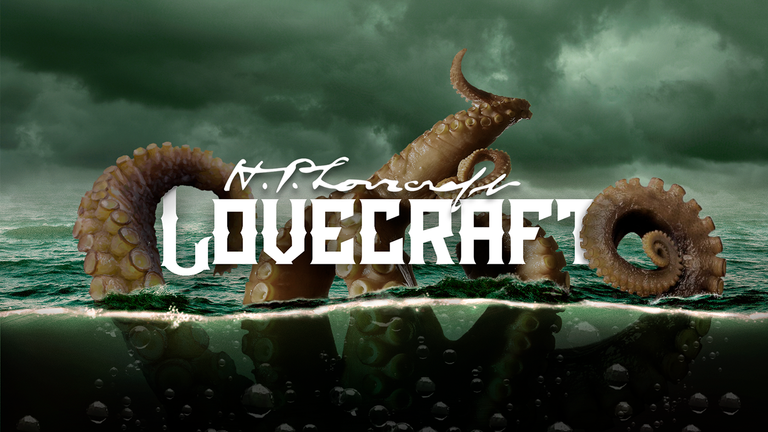
En mayor o menor medida, la creación literaria siempre obedece a las obsesiones de su autor. Ahora bien, en lo que a Howard Phillips Lovecraft se refiere, podemos ser categóricos al afirmar que construyó toda su obra, una de las más singulares e influyentes de la literatura fantástica, en base a sus fobias y complejos. Así, su aversión al pescado, le llevó a imaginar una serie de abominaciones procedentes del mar; su racismo, a las monstruosidades surgidas del apareamiento de los humanos con ellas; y las pesadillas, que invariablemente poblaron sus sueños, a la creación de un universo onírico que supera a las visiones producidas por la ingestión de alucinógenos.
Bien en solitario o bien en colaboración con alguno de sus muchos discípulos, que ya en vida le rindieron culto, Lovecraft escribió alrededor de 70 relatos, decenas de artículos y cientos de poemas. Paralelamente, su inveterada costumbre de contestar a cuantas misivas le remitieron sus lectores, hace que sus cartas estén cifradas alrededor de las 100.000. 60 años después de su muerte, Cthulhu, la más célebre de las siniestras divinidades por él imaginadas, ocupa el mismo lugar en la galería de la literatura de miedo -digámoslo con las palabras de Rafael Torres Oliver, uno de los mejores traductores del maestro- que Frankenstein, Drácula o el Bilbo Bolsón de Tolkien.
Nacido en Providence (Rhode Island) el 20 de agosto de 1890, fue su padre un viajante de comercio -según algunos autores alcoholizado- que murió, sin haber conocido apenas a su hijo, cuando el futuro escritor contaba ocho años. Quedó así la educación del joven Lovecraft al cuidado de su madre, una mujer posesiva y autoritaria que le inculcó su misantropía en base a la creencia de que su ascendencia británica los hacía superiores al resto de los norteamericanos. Es curioso que tanta vanidad no le impidiera recordar constantemente su fealdad al pequeño Howard. En efecto, una de las claves de cuanto a él se refiere hay que buscarla en su ingrata apariencia; otra, en la espléndida biblioteca de su abuelo materno. Despreciado por el resto de los niños, solitario, fantástico y reprimido, Howard Phillips hallará refugio en las lecturas tempranas. Sólo tiene seis años y ya conoce las leyendas del paganismo clásico. Así las cosas, no tardará en llamar a la antigüedad clásica “la Edad de Oro del mundo”.
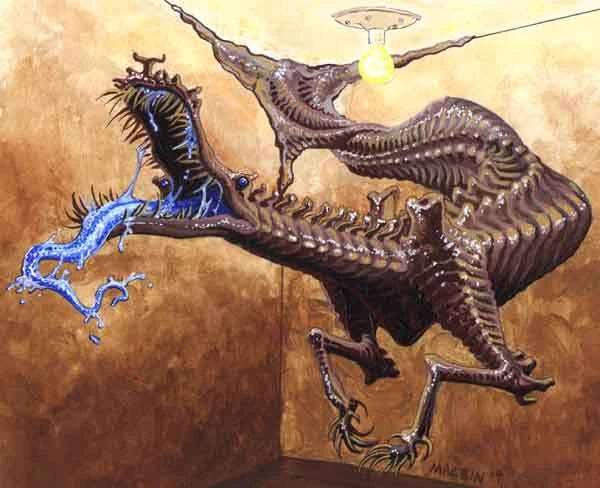
Ya avanzada su experiencia como lector, los autores que más le influirán serán Edgar Allan Poe -a quien define como “deidad y fuente de toda ficción diabólica”-, lord Dunsany, Arthur Machen y el resto de los que, con el correr del tiempo, reunirá en su ensayo ‘El horror en la literatura’, la más lúcida reflexión sobre el género. Muerta su madre en 1921 y agotada la fortuna familiar que le ha permitido vivir hasta entonces, por primera vez en su vida H. P. Lovecraft se ve en la necesidad de trabajar. Como lo único que sabe hacer es escribir, será crítico, corrector de estilo y, lo que verdaderamente cuenta para nosotros: autor de cuentos de terror. Entre sus primeros lectores se encuentran algunos de los escritores que no tardarán en convertirse en sus discípulos: August Derleth, Frank Belknap Long, Clark Ashton Smith, Donald Wandrei o Robert Bloch. A ellos -con quienes superará su antigua misantropía- dirige algunas de sus primeras cartas, que a menudo firma con el seudónimo de Abdul Alhazred, evocando el más célebre de sus personajes.
Es Abdul un árabe que perdió el juicio durante la redacción del ‘Necronomicón’, texto fabuloso en donde se recopilan los ritos de Cthulhu y los sortilegios para invocar a los Dioses Arquetípicos y demás divinidades que esperan volver a dominar nuestro planeta, como lo hicieran antes de la llegada a él del hombre. La saga de Cthulhu -”un monstruo de perfil vagamente antropomórfico, pero con una cabeza semejante a la de un pulpo cuya cara fuera una masa de tentáculos; un cuerpo con escamas de aspecto gomoso; tremendas garras en las extremidades delanteras y traseras, y alas largas y estrechas detrás”- constituye lo mejor de su producción.
Casado con Sonia Greene en 1924, se iría con ella a vivir a Brooklin para separarse dos años después. De regreso a su Providence natal, Lovecraft volvió a ser el misántropo de siempre, sin más interés que sus lecturas y sus escritos. Murió de cáncer intestinal el 15 de marzo de 1937. Desde entonces, su prestigio entre los lectores de las más variadas nacionalidades ha ido en aumento.
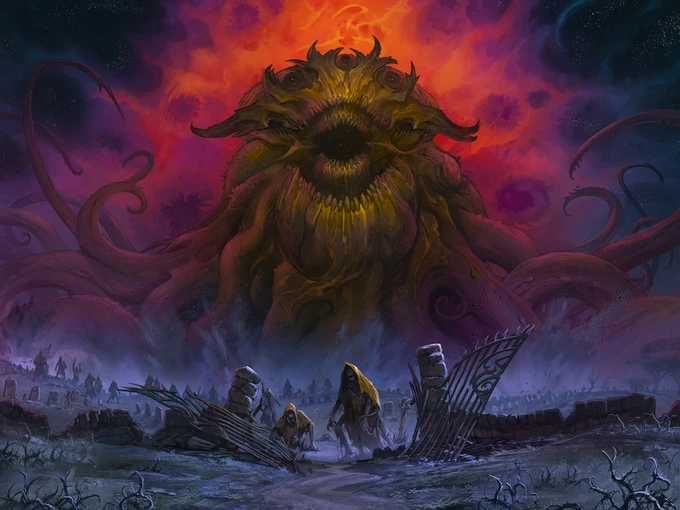
El trabajo de Lovecraft ha sido agrupado en tres categorías por algunos críticos. Mientras que Lovecraft prefirió no referirse a estas categorías él mismo, sí escribió en alguna ocasión: "Existen mis piezas Edgar Allan Poe y mis piezas Dunsany -pero- ¿dónde están mis piezas Lovecraft?[4]
- Historias macabras (c. 1905–1920)
* Historias del Ciclo del Sueño (c. 1920–1927)
* Los Mitos de Cthulhu / Lovecraft (c. 1925–1935)
Algunos críticos no ven la diferencia entre el Ciclo del Sueño y los Mitos de Cthulhu, frecuentemente señalando el recurrente Necronomicón y los subsiguientes dioses. Una explicación frecuentemente argüida es el que el Ciclo Del Sueño pertenece más a un género de fantasía en tanto que Los Mitos pertenece a la ciencia ficción.
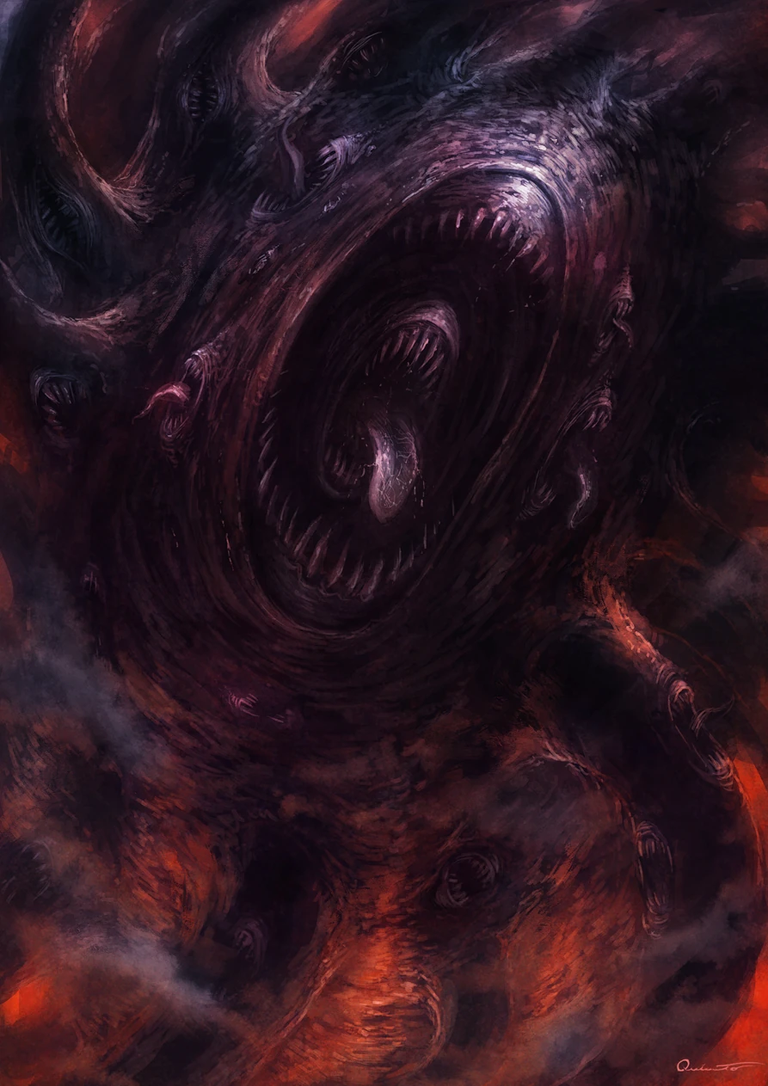
Las pesadillas que sufría Lovecraft le sirvieron de inspiración directa para su trabajo, y es quizás una visión directa de su inconsciente y su simbolismo explica su continuo revuelo y popularidad. Todos estos intereses le llevaron a apreciar de manera especial el trabajo de Edgar Allan Poe, quien influyó fuertemente en sus primeras historias, de atmósfera macabra y ocultos miedos que acechan en la oscuridad. El descubrimiento de Lovecraft de las historias de Edward Plunkett, Lord Dunsany, llevó su literatura a un nuevo nivel, resultando en una serie de fantasías que tomaban lugar en la tierra de los sueños. Fue probablemente la influencia de Arthur Machen, con sus bien construidos cuentos sobre la supervivencia del antiguo mal y de sus creencias místicas en misterios ocultos que yacían detrás de la realidad que finalmente ayudaron a inspirar a Lovecraft a encontrarse a sí mismo a partir de 1923.
Otra inspiración provino de una fuente insospechada: los avances científicos en áreas como la biología, astronomía, geología y física, que reducían al ser humano a algo insignificante, impotente y condenado en un universo mecánico y materialista, un pequeñísimo punto en la vastedad infinita del cosmos. Estas ideas contribuyeron de forma decisiva a un movimiento llamado cosmiquismo, y que le dieron a Lovecraft razones de peso para su ateísmo.
Esto lo llevó a un trono oscuro con la creación de lo que es hoy llamado comúnmente el Mito de Cthulhu, un panteón de deidades alienígenas extradimensionales y horrores que se alimentan de la humanidad y que tienen trazos de antiguos mitos y leyendas. El término Mito de Cthulhu fue acogido por el autor August Derleth después de la muerte de Lovecraft. El autor se refería a su mitología artificial como Yog-Sothothery.

Sus historias crearon uno de los elementos de mayor influencia en el género del horror: el Necronomicón, el escrito secreto del árabe Abdul Alhazred. El impacto y la fortaleza del concepto del mito ha llevado a algunos a concluir que Lovecraft basó su trabajo en mitos pre-existentes y en creencias ocultistas. Ediciones apócrifas del Necronomicón también han sido publicadas a través de los años.
Su prosa es anticuada, y frecuentemente usaba vocabulario arcaico u ortografía en desuso, así como adjetivos de extraño uso (gibosa, ciclópeo, atávico) e intentos de transcribir dialectos, que han sido calificados de imprecisos. Su trabajo, al ser Lovecraft un anglófilo, está plasmado de un inglés británico utilizando comúnmente escritura anacrónica.
Lovecraft fue un prolífico escritor de cartas. Durante su vida escribió miles de ellas, aunque no se conoce el número exacto. Una estimación de 100.000 parece ser acertada, como apunta L. Sprague de Camp. En algunas ocasiones las fechaba 200 años antes de la fecha en que habían sido escritas, lo que las databa en la época colonial americana, antes de la Revolución Americana que ofendía su Anglofilia. Explica que, según él, los siglos XVIII y XX habían sido los mejores; el primero siendo el siglo de nobleza y de gracia y el segundo de la ciencia, en tanto que el siglo XIX, en particular la era Victoriana habría sido un error.
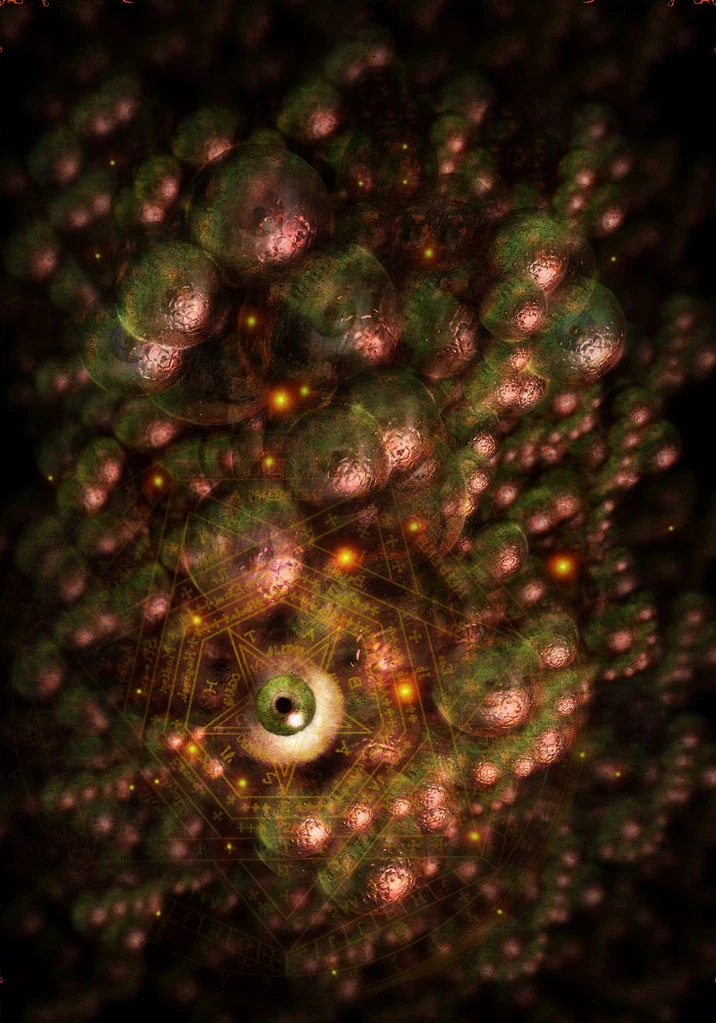
Source images / Fuente: H. P. Lovecraft.


Mis Blogs y Sitios Web / My Blogs & Websites:
- La Cucina di Susana.
- Cucinando con Susana.
- El Mundo de los Postres.
- RSVP -Raccomandati Se Vi Piacciono.
todo un grande míster Lovecraft, recientemente escuché EL TEMPLO y es una pasada la verdad.
Es verdad. Es horror puro. Si no lo has leído o escuchado te recomiendo Los Ciclos de Cthulhu, para mi su obra maestra. O seguramente si no la mejor, una de las mejores.
Gracias por comentar @mostrorobot.